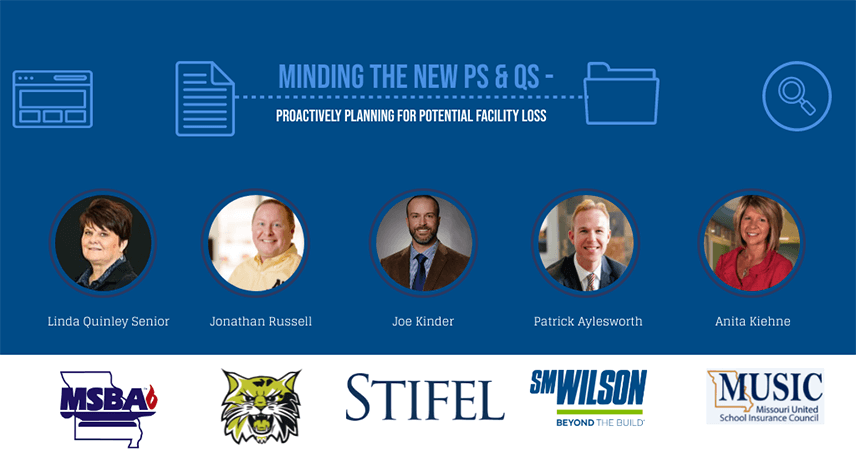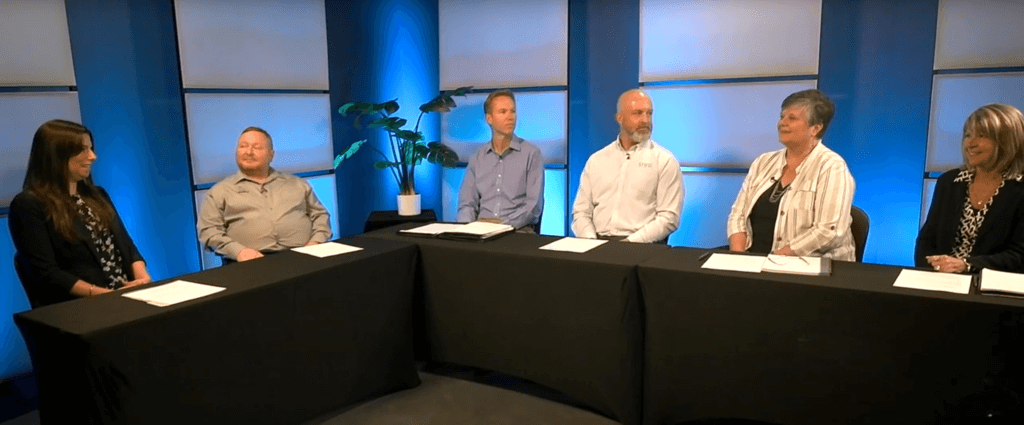
In 2017, Neosho School District’s Goodman Elementary in the small community of Goodman, MO, was severely damaged when an EF2 tornado struck. The aftermath left the building beyond repair, and the district was forced to determine how to handle this facility loss.
“Five years ago, we lost a building to a tornado. It was actually on April election day. Thankfully, the building was empty at the time, and it happened right after school, and all the kids had gotten home,” said Jonathan Russell, school board president with Neosho R-V School District. A tornado went through the city of Goodman, which is a part of our district. The only thing it hit was a couple of houses and our building. It was a total loss.”
Neosho School District was then forced to rebuild the elementary school. During the rebuilding process, the district discovered that the City of Goodman lacked building codes. This led the district to determine they had been underinsured and did not have the funds necessary to build a new facility that meets today’s standards with bigger classrooms and more square footage per child.
Neosho School District is one example of how communities and schools often struggle to prepare for Mother Nature’s catastrophic natural events. When these unthinkable events occur, school districts must find immediate solutions and additional funding sources to rectify the need for a replacement facility. No school board or district wants to experience this. To be proactive and prepared for a potential loss, ask these questions and determine the answers.
What Questions Board Members Need to Ask:
What is our preparedness plan? As a board member, you need to know if your district has an established preparedness plan in case of facility loss. Where will your students meet? How will you communicate? What materials do you need? Where will the materials come from? Do you have a learning (e-learning) contingency plan? This plan might be in place for years while you rebuild.
What does our insurance cover? Board members should know the district’s insurance carrier and type of coverage. It is important to have regular valuations. Does anyone walk the facility sites with your insurance entity? This should be done on a regular basis; no one knows your facilities as well as you do. Do you have a facility committee? This committee can be a great resource to review the valuations. Challenge the valuations if you have concerns.
What is our true cost to rebuild? To be prepared for a catastrophic loss, the board needs to consider the following. Does your coverage accommodate today’s needs? You might need a larger or more advanced facility than you are replacing. Do you have an inventory list for your District? Does your coverage cover inventory or just the structure? What inflation rates are considered in your coverage?
What is our financial position? Extra funds on top of insurance costs might be needed to replace inventory and to build the space needed to accommodate current needs. How much do you have in reserve? What is your bonding capacity?
S. M. Wilson & Co. has worked with 45+ school districts throughout Missouri and Illinois. Patrick Aylesworth, director of operations, suggested that districts should also consider the increased costs for construction materials and the long lead time for materials, impacting budgets and schedules. These insights assist school districts in determining how much funding they have available, working creatively with construction and design partners, and creating the best action plan for that particular school district.

The panel members include Jonathan Russell, Neosho School District, Joe Kinder, formerly with Stifel, Linda Quinley, Missouri School Boards Association (MSBA), Patrick Aylesworth, S. M. Wilson & Co., Anita Kiehne, Missouri United School Insurance Council (MUSIC), and Amanda Bohnert, S. M. Wilson & Co. as moderator.
For more information about proactively planning for potential facility loss, contact Patrick Aylesworth, Director of Operations, at patrick.ayleworth@smwilson.com.
To watch the webinar Minding the New Ps & Qs—Proactively Planning for Potential Facility Loss on Thursday, Aug. 8, click on this link to register. The MSBA Associate Member Advisory Council made the webinar possible.

![BEYOND THE BUILD: Minding The New Ps & Qs | Proactively Planning for Potentially Facility Loss [MSBA Associate Member Advisory Council Webinar]](https://www.smwilson.com/wp-content/uploads/2024/07/msba-webinar-web-1.png)